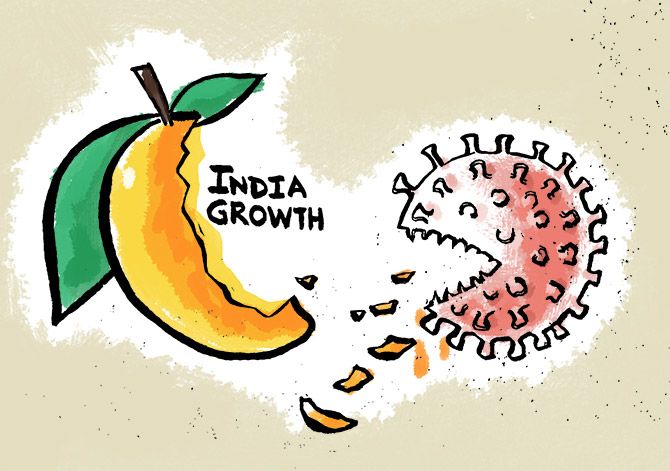RBI’s growth numbers might have to be revisited as the central bank’s real GDP growth projection of 26.2 per cent given in the MPC’s resolution of April 7 for the first quarter of 2021-22, were made before the full fury of the resurgence.

Those hardest hit by the second wave of the pandemic have been blue-collared workers, doctors and healthcare workers, law and order and municipal personnel, individuals eking out daily livelihood, and small businesses.
And there should be more measures taken to alleviate their pain, the Reserve Bank of India (RBI) said on Monday.
The report also indicated that the RBI’s growth numbers might have to be revisited as the central bank’s real GDP growth projection of 26.2 per cent given in the MPC’s resolution of April 7 for the first quarter of 2021-22, were "made before the full fury of the resurgence.”
Nevertheless, the "resurgence of COVID-19 has dented but not debilitated economic activity in the first half of Q1: 2021-22.
"Although extremely tentative at this stage, the central tendency of available diagnosis is that the loss of momentum is not as severe as at this time a year ago,” even as the loss of life and the caseload of infections are higher.
The worst affected groups of people “will warrant priority in policy intervention” and that “there is more work to be done,” the central bank said in its state of the economy report, released with its May bulletin.
This will be on top of the measures the RBI announced on May 5, including a Rs 50,000 crore package for the healthcare industry as well as restructuring of loans up to Rs 25 crore for individuals and small businesses.
"The impact of the new infections appears to be U-shaped,” the RBI said.
Agriculture and Information Technology appeared to have weathered the storm better.
While automated manufacturing and services that can be delivered remotely have done somewhat okay.
The worst affected people mentioned above represent the well of the ‘U’.
“Aggregate demand conditions have been impacted, albeit not on the scale of the first wave,” it said.
Goods and Services Tax (GST) collections in April at Rs 1.41 trillion were the highest since the introduction of GST.
There has been a sharp contraction in e-way bills, which represent inter and intrastate trades, but the total e-way bills remained above the pre-pandemic baseline of February 2020, “indicating that domestic trade has remained resilient on the back of digitisation of sales platforms," it said.
High frequency indicators for April and May 2021, despite the data lags, suggest that the “biggest toll of the second wave is in terms of a demand shock - loss of mobility, discretionary spending and employment, besides inventory accumulation.”
However, aggregate supply is less impacted.
Agriculture has remained robust, while the industrial production surged out of a two-month contraction aided by a favourable base effect.
"Anecdotal evidence points to feedback loops from the demand contraction seeping through into curtailments of output in the months ahead unless infections ebb," according to the RBI.
Corporate profits remained healthy, while financial institutions, including banks, relied on other income and lower provisioning for the rise in their net profits.
“Overall, the corporate sector is turning into a net saver in the economy," the RBI observed.











